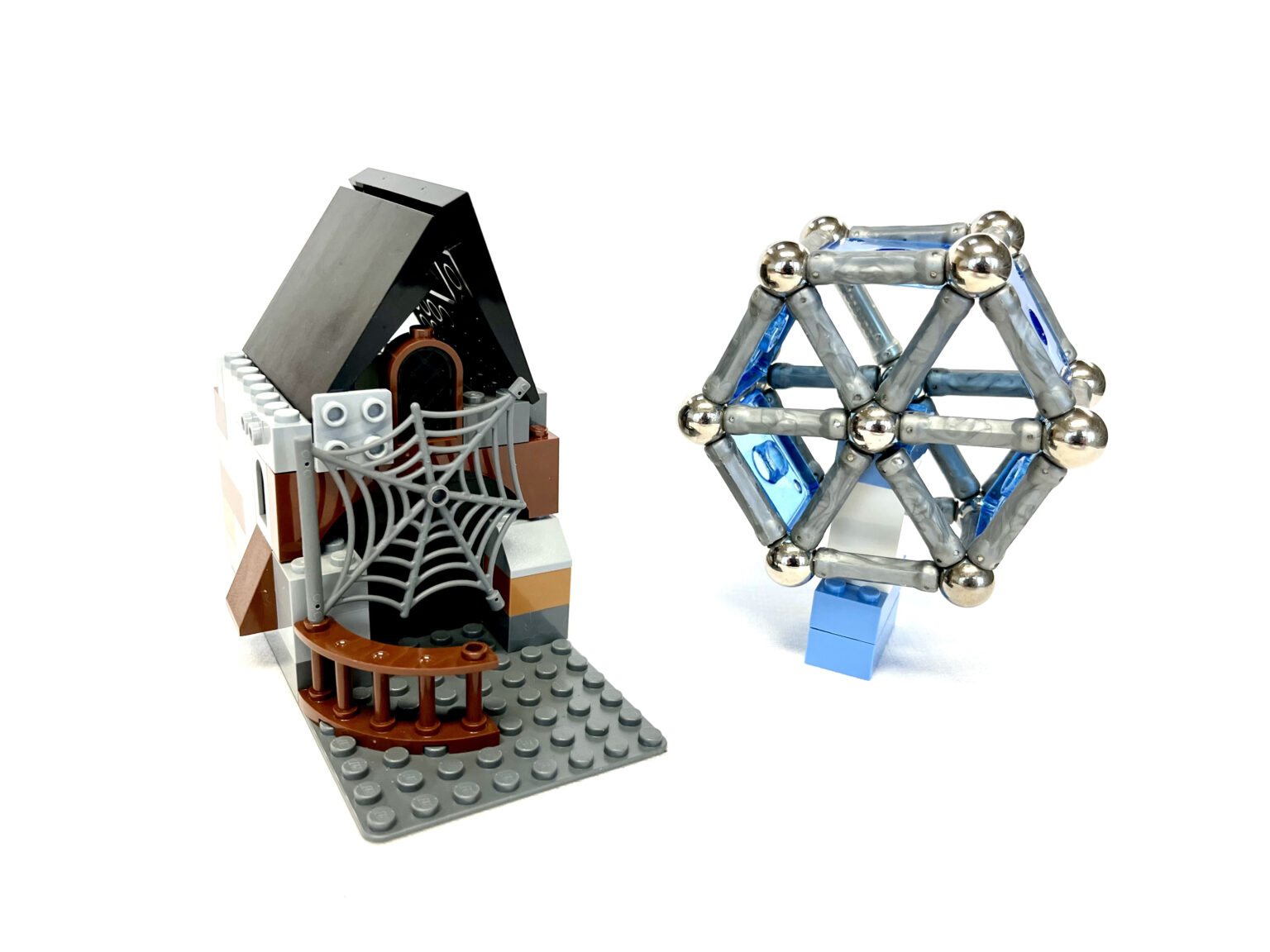Parallel – Build models from a theme
We build models from a common theme, e.g. circus, playground, amusement park, or any other theme that excites us. The purpose of the activity is that we build next to each other and share building materials, so that we motivate social play between us.

Procedure
Framework
Suggestion for introduction
We create a motivating framework for the children.
We could say, for instance: “Today, we will build under a common theme, which is… (e.g. a circus). We each build one or more things that fit the theme. Finally, we put all the models together and see what story they tell about the theme. We play with the models – both while we are building and afterwards. Although we work separately, we are together in building… (e.g. a circus). Therefore, we can help each other while we’re at it. And we can also give each other good ideas. We practice building together, and we try to use what we have already learned to reflect on the activity together. Maybe we learn something new about each other, like how we can share our ideas with others.”
Time
The activity can be adapted to the framework of one lesson and varied according to the time available and the children’s prerequisites.
Materials
We can use small Lego sets that we are familiar with, or wooden blocks, plus-plus, magnetic tiles, paper, or something else. We choose the material that motivates us to start building and we can also mix the materials.
During the activity
During the play session, the children encounter challenges and successes, where we can stop and help spot what is difficult or what is going well. We can do this in several ways:
Reflection routines
When we get the opportunity to reflect together with the children on what challenges or discoveries arise along the way, we can use one or more reflection routines. It could be, for example, a learning metaphor with a social strategy that we practice, an emoji that describes the feeling we have right now, or a rating of how well we think the building is going. In this way, a reflection routine can help to show and put into words the experiences that the children have during the play session.
Facilitating questions
We can ask facilitating questions to the children along the way, as they naturally arise in the building process. In this way, we facilitate the play session so that we continue the play and at the same time learn something from it. For example:
- I see that you have stopped building. I wonder how we can continue from here?
- I see that you have encountered a challenge. Should we try to solve it together?
- Try to notice what you are doing right now. Do you think this is a collaborative strategy?
Show and Tell
Finally, in the play session, we give a Show and Tell of our construction, so that we have the opportunity to share our experiences, reflections, and feelings about the construction process.
First, we talk about our model and the process of building it. During the Show and Tell, we can use reflection routines and reflective questions to support the discoveries that have been made. For example:
- What went well?
- What was difficult?
- Is there anything that you want to do differently the next time we build a model?